Methomyl
- CAS NO.:16752-77-5
- Empirical Formula: C5H10N2O2S
- Molecular Weight: 162.21
- MDL number: MFCD00055451
- EINECS: 240-815-0
- SAFETY DATA SHEET (SDS)
- Update Date: 2024-12-18 14:07:02
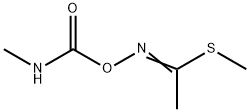
What is Methomyl?
Description
Acetamide acid (methomyl) is a carbamate broad-spectrum insecticide. Methomyl is classified as a restricted use pesticide (RUP). It is a crystalline solid with a slight sulphurous odour and very soluble in methanol, acetone, ethanol, and isopropanol. It decomposes with heat and releases hazardous gases/vapours, such as sulphur oxides, methyl isocyanate, and HCN. Acetamide acid (methomyl) is used both as a contact insecticide and as a systemic insecticide. It is used as an acaricide to control ticks and spiders; as fly bait; for foliar treatment of vegetable, fruit, field crops, cotton, and commercial ornamentals; and in and around poultry houses and dairies.
Chemical properties
Methomyl is a white crystalline solid with a slight sulfurous odor. A noncombustible solid, that may be dissolved in flammable liquids that may alter physical properties listed here.
Chemical properties
Acetamidic acid (methomyl) is carbamate broad-spectrum insecticide. Methomyl is clas- sifi ed as a restricted use pesticide (RUP). It is a crystalline solid with a slight sulfurous odor, very soluble in methanol, acetone, ethanol, and isopropanol. It decomposes with heat and releases hazardous gases/vapors, such as sulfur oxides, methylisocyanate, and HCN. Acetamidic acid (methomyl) is used both as a contact insecticide and as a systemic insecticide. It is used as an acaricide to control ticks, spiders, as fl y bait, for foliar treatment of vegetable, fruit and fi eld crops, cotton, commercial ornamentals, and in and around poultry houses and dairies.
The Uses of Methomyl
Methomyl is a pesticide. This mixture of two stereoisomers is used as a foliar spary to control field crops, stables and poultry houses, and in glasshouses on ornamentals and vegetables, or in flypapers. Cases have been reported in chrysanthemum growers and in two women working in a plant nursery.
The Uses of Methomyl
Insecticide, nematocide.
The Uses of Methomyl
Insecticide.
Definition
ChEBI: A carbamate ester obtained by the formal condensation of methylcarbamic acid with the hydroxy group of 1-(methylsulfanyl)acetaldoxime.
General Description
White crystalline solid with slight sulfurous smell. Used as a nematocide, and an insecticide on vegetables, tobacco, cotton, alfalfa, soy beans, and corn.
Air & Water Reactions
Water soluble.
Reactivity Profile
Methomyl is a carbamate ester. Carbamates are chemically similar to, but more reactive than amides. Like amides they form polymers such as polyurethane resins. Carbamates are incompatible with strong acids and bases, and especially incompatible with strong reducing agents such as hydrides. Flammable gaseous hydrogen is produced by the combination of active metals or nitrides with carbamates. Strongly oxidizing acids, peroxides, and hydroperoxides are incompatible with carbamates.
Hazard
Toxic by ingestion. Acetyl cholinesterase inhibitor, male reproductive damage, and hematologic effects. Questionable carcinogen.
Health Hazard
Methomyl has high oral toxicity, moderate inhalation toxicity and low skin toxicity. The probable oral lethal dose for humans is between 7 drops and 1 teaspoon for a 150 pound adult. Death is due to respiratory arrest.
Health Hazard
Acetamidic acid (methomyl) is potentially a highly poisonous material in humans. Exposures to acetamidic acid (methomyl) cause adverse health effects. It is highly toxic and causes inhibition of cholinesterase activity. The symptoms of toxicity include, but are not limited to, weakness, lack of appetite, blurred vision, pupillary constriction, cor- neal injury, headache, nausea, abdominal cramps, burning sensation, coughing, wheez- ing, laryngitis, shortness of breath, and vomiting. It may be harmful if absorbed through the skin of the mucous membranes and upper upper respiratory tract and cause chest discomfort, constriction of pupils, sweating, muscle tremors, and decreased pulse. After severe poisoning, occupational workers show symptoms of twitching, giddiness, confu- sion, muscle incoordination, heart irregularities, loss of refl exes, slurred speech, paralysis of the muscles of the respiratory system, and death. The target organs of methomyl toxic- ity include nerves, cardiovascular system, liver, and kidneys.
Health Hazard
Extremely toxic by oral route; moderatelytoxic by inhalation; exhibits acute, delayed,and chronic effects; cholinesterase inhibitor;symptoms are those of phosphate — or carbamate esters — the major signs of whichare increased salivation, lacrimation, spontaneous urination, blurred vision, pinpointpupils, tremor, twitching of muscle and lossof coordination; confusion, convulsions, andcoma may occur as well; other signs ofpoisoning include nausea, vomiting, cramps,diarrhea, slow heart rate, shortness of breath,and pulmonary edema (U.S. EPA 1988);death may result from respiratory arrest(Gosselin et al. 1984); the probable lethaldose from ingestion in adult human could be0.5–2 g; oral lethal dose in dog 30 mg/kg,and monkey 40 mg/kg; toxic effects fromskin absorption low; listed as extremely hazardous substance by the U.S. EPA.
LD50 oral (mouse): 10 mg/kg
LD50 oral (rat): 17 mg/kg
LD50 inhalation (rat): 77 ppm
Tsai et al. (2003) have reported a caseof outbreak of food poisoning at a seafoodrestaurant in Taiwan. High levels of methomyl were found in leafy-vegetables stir-friedwith crab claws (380 ppm) and fried mussels (1113 ppm). The median latency frombeginning eating to first symptoms was5-minutes. The clinical symptoms were general weakness, ataxia, dizziness, vomiting,sweating, floating sensation, headache, dyspnea, and blurred vision..
Fire Hazard
When heated to decomposition, Methomyl emits very toxic fumes of nitrogen oxides and sulfur oxides. Do not subject liquid formulations to temperatures below 32F.
Flammability and Explosibility
Not classified
Agricultural Uses
Insecticide, Acaricide: Methomyl is a broad-spectrum insecticide that is particularly effective against organophosphorus-resistant pests. It is used as an acaricide to control ticks and spiders. It is used for foliar treatment of vegetable, fruit and field crops, tobacco, cotton, commercial ornamentals, and in and around poultry houses and dairies. It is also used as a fly bait. Methomyl is effective as a “contact insecticide,” because it kills target insects upon direct contact, and also as a “systemic insecticide” because of its capability to cause overall “systemic” poisoning in target insects, after it is absorbed and transported throughout the pests that feed on treated plants. It is capable of being absorbed by plants without being “phytotoxic” or harmful, to the plant. A U.S. EPA restricted Use Pesticide (RUP).
Trade name
ACINATE®; AGRINATE®; CIMETLE®; DuPont TM 1179®; FRAM FLY KILL®; FLYTEK®; IMPROVED BLUE MALRIN SUGAR BAIT®; IMPROVED GOLDEN MALRIN BAIT®; INSECTICIDE 1179®; KIPSIN®; KUIK®; LANNATE®; LANNOX®; LANOX 90®; LANOX 216®; METHOMEX®; METHOMYL® 20SC; MEMILENE®; METHAVIN®; NU-BAIT II®; NUDRIN®; PILLARMATE®; RENTOKILL®; RENTOKIL FRAM FLY BAIT®; RIDECT®; SD 14999®; SOREX GOLDEN FLY BAIT®; WL 18236®
Contact allergens
Methomyl is a pesticide agent, a carbamate insecticide with anticholinesterase activity. This mixture of two stereoisomers is used as a foliar spray to control field crops, in stables and poultry houses, and in glasshouses on ornamentals and vegetables, or in flypapers. Cases were reported in chrysanthemum growers and in two women working in a plant nursery
Safety Profile
Poison by ingestion, inhalation, and subcutaneous routes. Mildly toxic by skin contact. Wen heated to decomposition it emits very toxic fumes of NOx and SOx.
Potential Exposure
Methomyl is a broad-spectrum insecticide used as insecticide in many vegetables, field crops;
certain fruit crops; and ornamentals.
Incompatibilities: Keep away from strong bases, strong oxidizers. Heat causes decomposition forming toxic and irritating fumes including nitrogen oxides; sulfur oxides;
hydrogen cyanide; methylisocyanate
First aid
If this chemical gets into the eyes, remove any contact lenses at once and irrigate immediately for at least 15 min, occasionally lifting upper and lower lids. Seek medical attention immediately. If this chemical contacts the skin, remove contaminated clothing and wash immediately with soap and water. Seek medical attention immediately. If this chemical has been inhaled, remove from exposure, begin rescue breathing (using universal precautions, including resuscitation mask) if breathing has stopped and CPR if heart action has stopped. Transfer promptly to a medical facility. When this chemical has been swallowed, get medical attention. Give large quantities of water and induce vomiting. Do not make an unconscious person vomit. Methomyl 1731 Medical observation is recommended for 2448 h after breathing overexposure, as pulmonary edema may be delayed. As first aid for pulmonary edema, a doctor or authorized paramedic may consider administering a corticosteroid spray.
Environmental Fate
Biological. From the first-order biotic and abiotic rate constants of methomyl in
estuarine water and sediment/water systems, the estimated biodegradation half-lives were
75–165 and 39–134 days, respectively (Walker et al., 1988).
Soil. Harvey and Pease (1973) reported that methomyl dissipated rapidly in fine sand
and loamy sand soils. One month following application to a Delaware soil, 1.8% of the
applied dosage was recovered and after 1 year, methomyl was not detected. T
Groundwater. According to the U.S. EPA (1986) methomyl has a high potential to
leach to groundwater.
Plant. The reported half-lives of methomyl on cotton plants, mint plants and Bermuda
grass were 0.4–8.5, 0.8–1.2 and 2.5 days, respectively (Willis and McDowell, 1987).
Chemical/Physical. Emits toxic fumes of nitrogen and sulfur oxides when heated to
decomposition (Sax and Lewis, 1987; Lewis, 1990).
storage
Acetamidic acid (methomyl) should be kept stored in a sealed container in a cool (below 0 ° C), dry, area with adequate ventilation. The chemical should be kept away from incompatible chemical substances, strong oxidizing agents, strong bases, other pesticides, and food or feed.
Shipping
UN2757 Carbamate pesticides, solid, toxic, Hazard Class: 6.1; Labels: 6.1-Poisonous materials. UN2811 Toxic solids, organic, n.o.s., Hazard Class: 6.1; Labels: 6.1-Poisonous materials, Technical Name Required
Incompatibilities
Keep away from strong bases, strong oxidizers. Heat causes decomposition forming toxic and irritating fumes including nitrogen oxides, sulfur oxides, hydrogen cyanide, methylisocyanate.
Waste Disposal
Consult with environmental regulatory agencies for guidance on acceptable disposal practices. Generators of waste containing this contaminant (≥100 kg/mo) must conform to EPA regulations governing storage, transportation, treatment, and waste disposal. Alkaline hydrolysis leads to complete degradation to nontoxic products. May be dissolved in water and sprayed into a furnace with effluent gas scrubbing also. In accordance with 40CFR165, follow recommendations for the disposal of pesticides and pesticide containers. Must be disposed properly by following package label directions or by contacting your local or federal environmental control agency, or by contacting your regional EPA office.
Precautions
Occupational workers should avoid contact of acetamidic acid (methomyl) with the skin, eyes, or clothing, and avoid exposures to vapor or mist. Workers should be careful when storing and/or disposing of acetamidic acid, avoid the dust contaminating water, food, or feed by storage or disposal. Workers should use respiratory protection: Government approved respirator. Hand Protection: Compatible chemical-resistant gloves. Eye Protection: Chemical safety goggles.chemical safety goggles.
Properties of Methomyl
| Melting point: | 78°C |
| Boiling point: | 144°C |
| Density | d424 1.2946 |
| vapor pressure | 0Pa at 20℃ |
| refractive index | 1.6430 (estimate) |
| storage temp. | 0-6°C |
| solubility | Chloroform: Slightly Soluble,Methanol: Slightly Soluble |
| form | solid |
| pka | 13.27±0.46(Predicted) |
| Water Solubility | Soluble. 5.8 g/100 mL |
| Merck | 13,6012 |
| BRN | 3081564 |
| Exposure limits | NIOSH REL: TWA 2.5 mg/m3; ACGIH TLV: TWA 2.5 mg/m3. |
| Stability: | Stable. Incompatible with strong bases, strong oxidizing agents. |
| CAS DataBase Reference | 16752-77-5(CAS DataBase Reference) |
| NIST Chemistry Reference | Methomyl(16752-77-5) |
| EPA Substance Registry System | Methomyl (16752-77-5) |
Safety information for Methomyl
| Signal word | Danger |
| Pictogram(s) |
 Skull and Crossbones Acute Toxicity GHS06  Environment GHS09 |
| GHS Hazard Statements |
H300:Acute toxicity,oral H410:Hazardous to the aquatic environment, long-term hazard |
| Precautionary Statement Codes |
P264:Wash hands thoroughly after handling. P264:Wash skin thouroughly after handling. P270:Do not eat, drink or smoke when using this product. P273:Avoid release to the environment. P391:Collect spillage. Hazardous to the aquatic environment P301+P310:IF SWALLOWED: Immediately call a POISON CENTER or doctor/physician. P405:Store locked up. |
Computed Descriptors for Methomyl
| InChIKey | UHXUZOCRWCRNSJ-QPJJXVBHSA-N |
New Products
(S)-3-Aminobutanenitrile hydrochloride 4-Methylphenylacetic acid N-Boc-D-alaninol N-BOC-D/L-ALANINOL Tert-butyl bis(2-chloroethyl)carbamate 3-Morpholino-1-(4-nitrophenyl)-5,6-dihydropyridin- 2(1H)-one Furan-2,5-Dicarboxylic Acid Tropic acid 1-Bromo-3,5-Di-Tert-Butylbenzene S-2-CHLORO PROPIONIC ACID ETHYL ISOCYANOACETATE 2-Bromo-1,3-Bis(Dimethylamino)Trimethinium Hexafluorophosphate 4-IODO BENZOIC ACID 3-NITRO-2-METHYL ANILINE 1-(2,4-DICHLOROPHENYL) ETHANAMINE (2-Hydroxyphenyl)acetonitrile 4-Bromopyrazole 2-(Cyanocyclohexyl)acetic acid 4-methoxy-3,5-dinitropyridine 1-(4-(aminomethyl)benzyl)urea hydrochloride 2-aminopropyl benzoate hydrochloride diethyl 2-(2-((tertbutoxycarbonyl)amino) ethyl)malonate tert-butyl 4- (ureidomethyl)benzylcarbamate Ethyl-2-chloro((4-methoxyphenyl)hydrazono)acetateRelated products of tetrahydrofuran
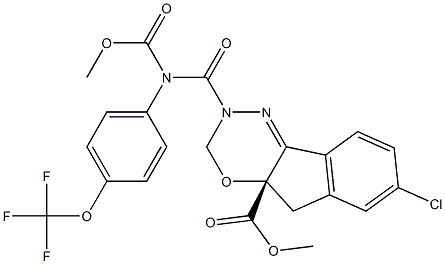
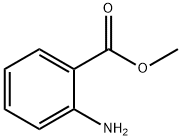




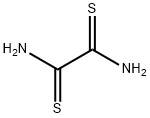
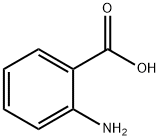
You may like
-
 Methomyl 98% (HPLC) CAS 16752-77-5View Details
Methomyl 98% (HPLC) CAS 16752-77-5View Details
16752-77-5 -
 2033-24-1 98%View Details
2033-24-1 98%View Details
2033-24-1 -
 1975-50-4 98%View Details
1975-50-4 98%View Details
1975-50-4 -
 2-HYDROXY BENZYL ALCOHOL 98%View Details
2-HYDROXY BENZYL ALCOHOL 98%View Details
90-01-7 -
 2-Chloro-1,3-Bis(Dimethylamino)Trimethinium Hexafluorophosphate 221615-75-4 98%View Details
2-Chloro-1,3-Bis(Dimethylamino)Trimethinium Hexafluorophosphate 221615-75-4 98%View Details
221615-75-4 -
 61397-56-6 CIS BROMO BENZOATE 98%View Details
61397-56-6 CIS BROMO BENZOATE 98%View Details
61397-56-6 -
 14714-50-2 (2-Hydroxyphenyl)acetonitrile 98+View Details
14714-50-2 (2-Hydroxyphenyl)acetonitrile 98+View Details
14714-50-2 -
 118753-70-1 98+View Details
118753-70-1 98+View Details
118753-70-1